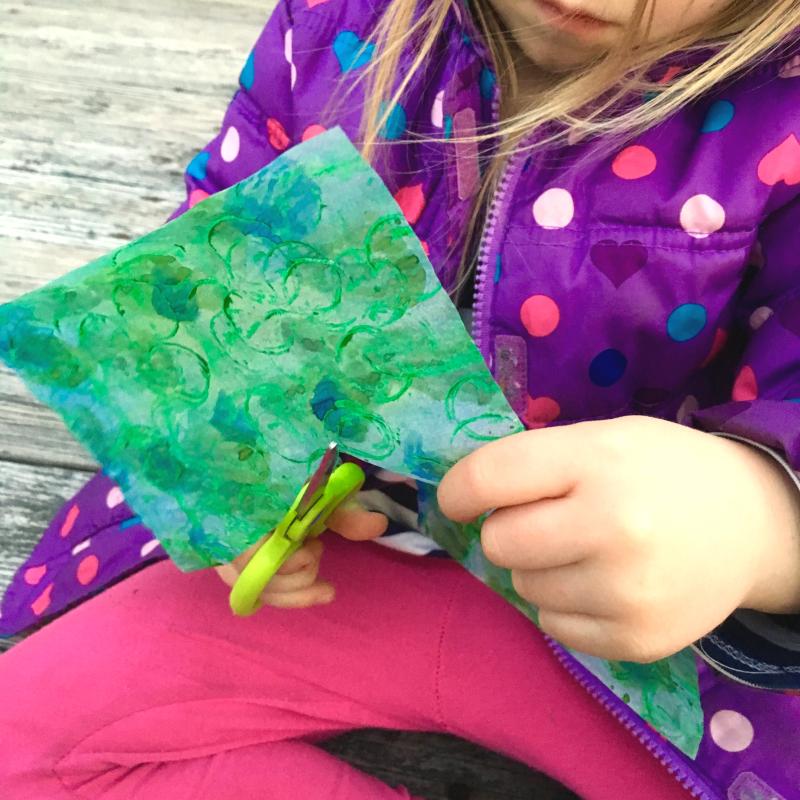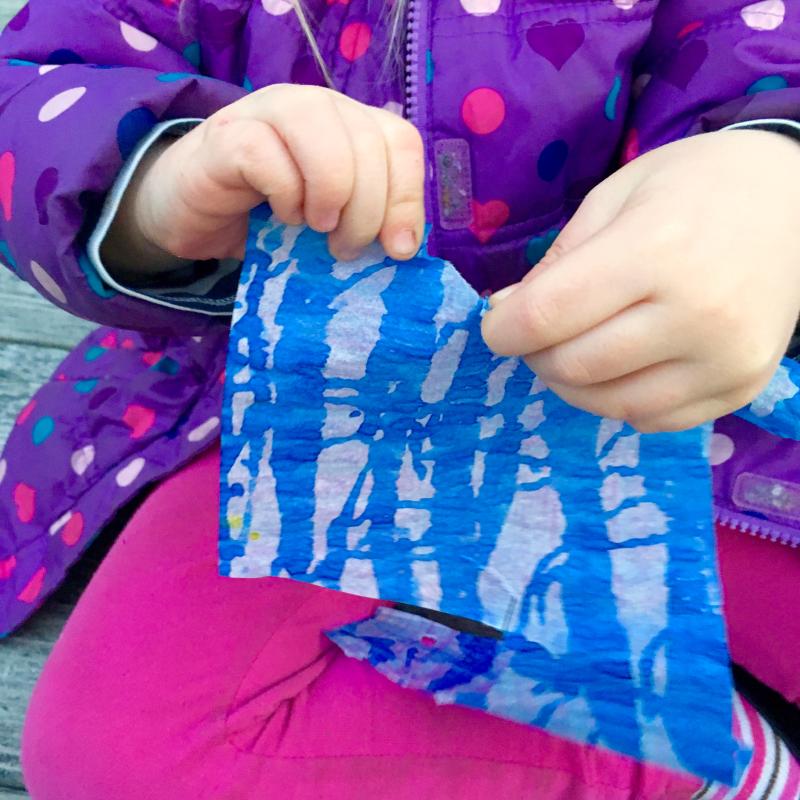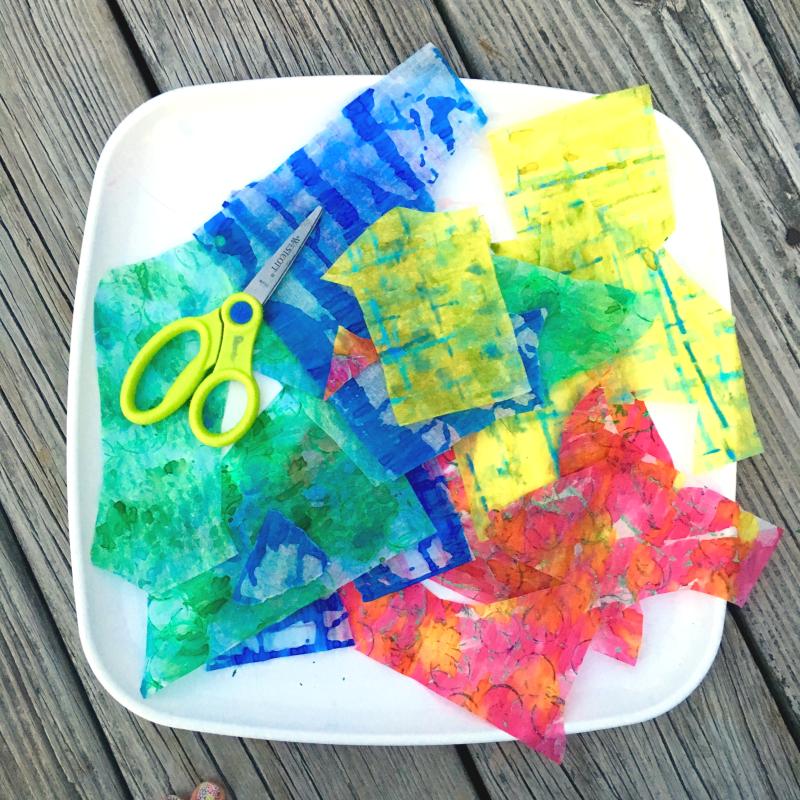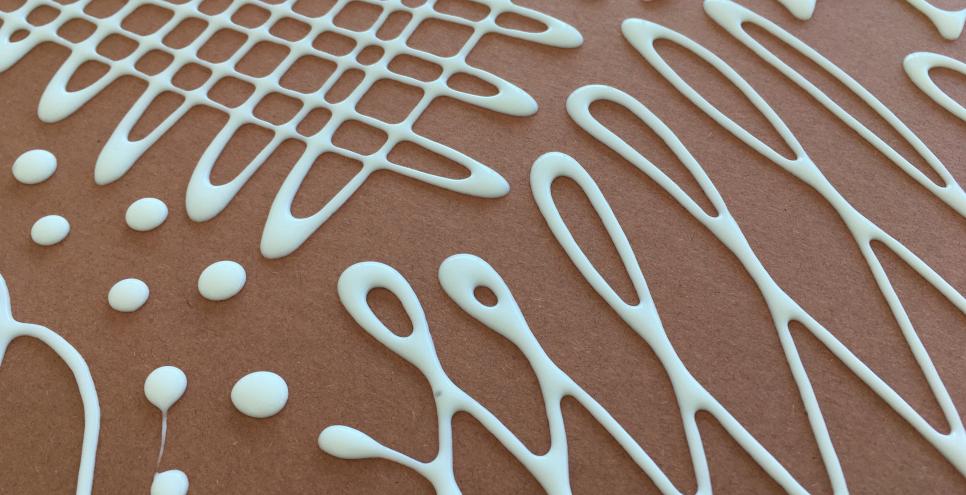Watercolor-Painted Collage Papers
If you’re a parent or educator, hearing the name Eric Carle probably brings many colorful pictures mind. His iconic tissue paper collages are loved by many.
Are you drawn to his art? What do you like about his images? When I ask this to students and visiting educators here at The Carle, inevitably mentioned are the vivid colors, exciting visual textures, and simplified, or abstracted, shapes. The visual appeal and accessibility of his images make children and adults alike want to try creating their own Eric Carle-inspired art.
Eric creates his painted papers with acrylic paint and tissue paper. You can see slides of his process at his official website. Acrylic paint is not a material I typically use with young children for a variety of reasons, and it’s not a material widely available in most early-elementary classrooms.
Teachers tell us they attempt Eric Carle-inspired tissue paper-painting projects with their students using tempera paint, with mixed success. Occasionally it works. If the tissue paper is too thin, however, the paint bleeds and the tissue sticks to the work surface. In other instances, the tissue paper has been so thin it turned into mushy pulp.
We’ve come up with a few alternative materials and processes so that children and adults can have a fun and successful experience creating their own visually textured collage papers.
After a slew of papers are dry, they are ready to be cut or saved for just the right project.
When we make Eric Carle-inspired collages in our programs we like to let our students decide the subject matter of their picture rather than require they make one of “Eric Carle’s” animals. Borrowing a phrase by the artist Henri Matisse, we invite our students to “draw with scissors,” or tear their papers, and see where that leads them. Sometimes they make representational art, and sometimes not.
Be sure to visit the collage category of our blog more ideas and inspiration.
Happy Creating!





